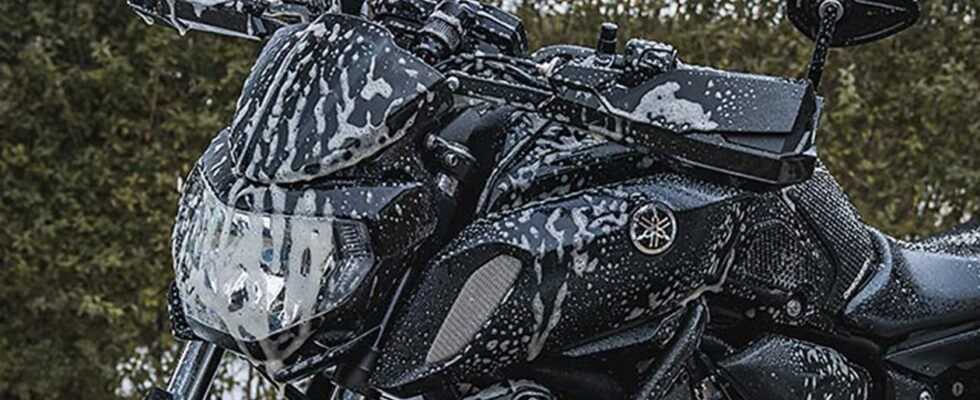After a long tour, the bike is usually dirty and needs to be cleaned thoroughly. Before wintering at the latest, you should comply with the request. The dirt collects on rim spokes, hard-to-reach places behind motorcycle cases and exhaust trims. Thrown chain grease stubbornly sticks to the frame and wheel. If the motorcycle is to be cleaned quickly and effortlessly, special cleaners help. But what are they good for and are they worth the money?
The expert organization KÜS tested twelve motorcycle cleaners and found major differences. Not only in terms of cleaning performance, but also in terms of prices. From the cheapest cleaner for under seven euros to the most expensive at just under 23 euros.
The clear test victory with 96.25 out of 100 possible points went to the S100 Total Cleaner Plus. The bike cleaner from Dr. Wack achieved top marks in terms of cleaning performance as well as application and material compatibility tests.
Well behind are the inexpensive and also recommendable Procycle Gel Cleaner with 83.75 points and the most expensive cleaner in the test, the Liqui Moly Motorbike Cleaner for around 23 euros with 80.75 points.
The cleaners Bike Care (67.75 points) and Motorex Moto Clean (64 points) achieved somewhat acceptable cleaning performance. Castrol, Nigrin and Caramba only got half the maximum number of points. Muc Off, WD-40 and Motul did even worse.
The bottom of the test was the Nigrin technical cleaner for motorcycles with a meager 22.75 points, which failed miserably in the cleaning performance and material compatibility test.
So was tested
To evaluate the cleaning performance, various test soils were applied to paint and aluminum surfaces and dried. This simulates the real operating conditions under which a motorcycle becomes soiled to varying degrees over time. The most difficult task is removing a downright sticky test dirt that resembles chain grease. This grease not only stubbornly sticks to the drive chain, but also to other parts of the motorcycle if it is thrown off the chain along with dirt particles.
It was rated how the lighter soiling can be washed off the aluminum with a moderately strong water jet after applying the motorcycle cleaner in accordance with the manufacturer’s instructions. The particularly heavily soiled painted surfaces were mechanically supported by a sponge. In the worst case, more than half of the motorcycle cleaners removed only a small part of the dirt, barely visible. Only one cleaner achieved flawless cleanliness under all conditions; two cleaners delivered satisfactory to extremely good results.
Gels are easier to use
In addition to the cleaning performance, the KÜS also attached importance to other aspects such as the drainage behavior or the application, which stands for operating instructions, handling, dosability, spray pattern or exposure time. The motorcycle cleaners with gel formulas tended to perform better in terms of drainage behavior, because, in contrast, liquid cleaners do not adhere well to vertical surfaces and can therefore work less efficiently over time.
Some are too aggressive
Particularly important for motorcycle cleaners is their effect on a wide variety of materials if they are sprayed on for longer than prescribed by the manufacturer. Because the cleaner can sometimes be difficult to wash off in hard-to-reach places or splashes on Plexiglas or polycarbonate can sometimes be overlooked. The motorcycle cleaners acted on the material for up to 24 hours in the test. It was found that cleaners with particularly high pH values tend to be more aggressive. In extreme cases, iron even showed severe corrosion and broke Plexiglas at a point pierced with metal.
